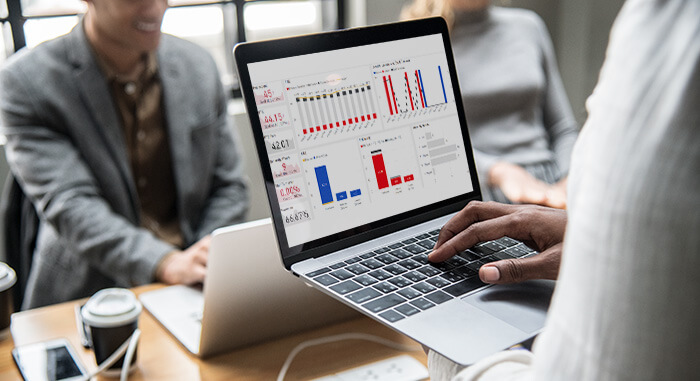Reconciling HR analytics with the human side of HR
9 October 2023In today's data-driven environment, the importance of data cannot be ignored in HR either. This is not news. Yet the potential of HR data is still underutilized in many organizations and HR professionals may be reticent on how to reconcile analytics with the human side of HR.
How to unlock the potential of HR data analytics in your organization?
- HR Data Analytics enables objective decision-making, forecasting and impact measuring
- Only complemented with human judgment, HR Data Analytics can align with an organization's unique context and goals
- Data Analytics can be deployed in virtually any HR domain. HR analytics can also be a solution in small projects or for specific problems.
Do data analytics make your HR policies less human?
HR professionals who are not at all familiar with HR data analytics might think analytics is solely focused on data and technology and will replace human judgment in HR decision making. The opposite is true. HR Data Analytics should be seen as a tool to enable HR professionals to make better informed, objective and effective decisions, rather than replacing their expertise.
While data can provide valuable insights, skilled HR professionals are still indispensable for analyzing and interpreting data in the context of the organization’s goals, culture and specific challenges.
HR professionals are still indispensable for analyzing and interpreting data within the unique context of their organization.
The potential of HR Data Analytics
- Reveal patterns and identify factors that influence crucial metrics like employee engagement, staff turnover, or absenteeism. This knowledge can be used to create targeted strategies to address specific challenges.
- Make forecasts based on historical data. For example, predictive models can help identify employees who are at risk of leaving the organization, enabling proactive retention strategies.
- Measure the impact of HR initiatives. By tracking and analyzing key metrics, HR professionals can assess the success of let’s say training programs or well-being initiatives. This data-driven feedback loop allows for continuous improvement.

Some small-scale examples
- Improved Talent Acquisition. Think of optimizing your sourcing strategy by identifying key recruitment channels that yield the highest-quality candidates. Or improving the time-to-hire by analyzing time taken at each stage of the selection process and identifying bottlenecks.
- Streamlining employee count and FTE calculations. These data are often spread across multiple systems and may be inconsistent or incomplete, which leads to challenges in workforce planning and resource allocation. Through data analysis, you can optimize HR data management processes and implement accurate tracking mechanisms. This might reveal issues such as seasonal fluctuations and excessive reliance on temporary staffing, which can then be addressed by developing an improved staffing strategy.
- Analysis of employee engagement surveys could reveal a pattern of factors contributing significantly to the decline in employee engagement, such as limited opportunities for career growth, lack of recognition, and communication gaps. Based on this knowledge, you can introduce skill development programs, boost employee recognition programs, and establish effective communication channels.
- Compensation and Benefits Optimization. Taking an analytics approach allows you to create a fair and competitive comp & ben strategy based on analysis of salary data, benchmarks, and employee performance. HR data analytics can also provide insights into the utilization of the benefits of eg. your cafeteria plan, allowing to tailor offerings to meet employees' evolving needs and preferences.
With data-driven insights on your side, you can make informed decisions and create an effective HR strategy.
Ready to implement HR Data Analytics in your organization?
HR Data Analytics is a game-changer for tackling the challenges that hold back your employees' development, and your company's growth. With data-driven insights on your side, you can make informed decisions and create an effective HD strategy.
In addition, HR Data Analytics will also play an important role in the context of the upcoming mandatory ESG reporting for many companies.
Looking for guidance to set up HR data analytics within your organization? Don’t hesitate to get in touch with TriHD or have a look at our Portfolio of Services.
Header image: Image by rawpixel.com on Freepik
Content image: Image by rawpixel.com on Freepik
Related content
-
Reference case
From growing pains to growth paths: supporting nonprofit Capital with HR expertise
-
Blog
Should L&D professionals be subject matter experts?
-
Blog
Should L&D experts put more effort into measuring ROI?
-
Blog
How to translate L&D efforts into learning?
-
Blog
Why are ‘skills of the future’, ‘upskilling’ and ‘reskilling’ so trending?
-
Blog
How to make talent acquisition a strategic priority? - Webinar takeaways